#oracle ticketing system
Explore tagged Tumblr posts
Text
Sort of self indulgent but part of me really wants to see Dick Grayson go back to being a cop. Though to be clear, I don't want an edgy, Grayson trying to fix the system as the one good cop within a corrupt police force, style story or an angsty trying to make peace with having to carry a gun despite his mentor's belief.
I want fun, mostly light hearted antics of Dick Grayson as a beat cop and all the shenanigans that can come from it.
I want a training officer who's utterly perplexed at how competent Grayson is, despite the fact Grayson is trying to fly under the radar and underplay his abilities.
I want the bat family and Titans to constantly find ways to tease Grayson for being a cop.
I want Damian to ride in Grayson's cop car and to pretend to be indignant but secretly wanting to play with the sirens.
I want Selina and Jason to see how close to the line they can get with Officer Grayson before he is forced to arrest them.
I want Officer Grayson to give Bruce Wayne a ticket and it becoming a running joke.
I want Stephanie and Cassandra to swap out all of Graysons uniforms to a size smaller, leading to Officer Grayson to trend online as "Officer Sexy" (they regret nothing).
I want super heroes trying to keep a straight face whilst giving Officer Grayson their statement.
I want Dick to slowly realise just how bizarre the DC Universe is from the perspective of law enforcement.
I want B tier villians developing an inferiority complex when they get taken down by Officer Grayson without needing to call in any super heroes.
I want Dicks attempts to fly under the radar to be regularly foiled and needing to find ways to resolve matters in the least Nightwing way possible.
I want Grayson in situations where he is forced to go full Nightwing and then needs Oracle's help to clean up the mess and protect he's secret identity.
Barbara: What is it this time?
Dick: I swear, this was just supposed to be a noise complaint.
Barbara: And what has it turned into?
Dick: 27 unconscious gangsters and an illegal weapon shipment.
Barbara: *groan*
59 notes
·
View notes
Text
F1 FANFICS REC LIST - AU but one of them is still a driver

Halo (7365 words) by belowfreezing Rating: Teen And Up Audiences Relationships: Charles Leclerc/Max Verstappen Summary: "We have the halo system. It was a turning point for reducing head and neck injuries." What a fitting name, Max thought, as he envisioned a glowing ring above Charles's head. OR Max is a MotoGP rider and Charles is a Formula 1 driver. They fall in love.
oOoOoOo
Somewhere in Monaco (2121 words) by youknowmyname Rating: General Audiences Relationships: Charles Leclerc/Max Verstappen Summary: Max Verstappen is a driver for Oracle Red Bull Racing, and Charles Verstappen is the prince of Monaco. Somehow, and somewhere, their paths cross.
oOoOoOo
chronically bitchless but still wifed up (8361 words) by leafmeal0ne Rating: Teen And Up Audiences Relationships: Lando Norris/Oscar Piastri Summary: Lando wasn’t above throwing his weight around in order to get what he wanted, at least in some circumstances. And he wanted to meet Oscar Piastri. In general, he wanted to go to a MotoGP weekend and probably could have either bought tickets and waited around there like a normal person or asked one of his actual sort-of friends in the paddock to hang out in their garage, but the more specific desire was to meet Oscar Piastri.
oOoOoOo
see you again (99005 words) by madlyiephasetwo Rating: Explicit Relationships: Lando Norris/Carlos Sainz Jr, Background George Russel/Alex Albon, Even more background Daniel Ricciardo/Max Verstappen Summary: The young man was handing over the bronze trophy to Charles and Carlos knew he had to be someone famous or important to present trophies at Silverstone but Carlos couldn’t quite put a finger on it, couldn’t place where he had seen his face before, even though there seemed to be something vaguely familiar about it. Lando is fourth in line to the British throne. Carlos is still a Formula 1 driver.
oOoOoOo
Loud And Clear Baby (3782 words) by cxrnlia Rating: Teen And Up Audiences Relationships: Lando Norris/Oscar Piastri Summary: Lando gets a new mechanic, who turns out to be a very young, attractive Australian. His accent for starters doesn’t even irritate Lando. Yeah he’s done for.
oOoOoOo
Fair Winds And Following Seas (7127 words) by NovaCloud Rating: Mature Relationships: Charles Leclerc/Max Verstappen Summary: Max lets out an impatient sigh and looks at Lando as he washes the shot glass before putting it back. “Well who is it?”
Lando rolls his eyes. “You’re no fun.”
“I’m delightful, now come on,” Max presses, trying not to show he’s getting curious. “Who is this mystery person?”
“Charles Leclerc!” Lando says with a bright smile, he’s almost jumping up and down with excitement. “He’s chartering the yacht for the week!”
“Charles Leclerc?” Max repeats, raising an eyebrow. “The Charles Leclerc, F1 driver for Ferrari, is here?”
Or
Max works on a super yacht during the summer to make some money to invest in his sim racing career and Charles happens to charter it for the week.
oOoOoOo
You're by the side of the road (5544 words) by szerelem Rating: General Audiences Relationships: Lando Norris/Oscar Piastri, Oscar Piastri & Daniel Ricciardo Summary: Quadrant ☑️ @Quadrant • 30 June We are delighted to announce that Quadrant got invited to the British Grand Prix as McLaren’s guest! We couldn’t be more thankful to the team! See you guys there. @McLarenF1 💭 91 🔁 8K ❤ 29K 📶 981,712 | | McLaren ☑️ @McLarenF1 • 30 June 👀 Can’t wait to see you guys in the garage! 💭 28 🔁 5K ❤ 27K 📶 781,693
oOoOoOo
Drawn Together (4907 words) by Place2b Rating: General Audiences Relationships: Alexander Albon/George Russell Summary: George Russell was a proper omega. He was tall and slim and spoke with a crisp, smooth voice that left everyone waiting to see what he would say next. He moved with elegance and grace, never stumbling or tripping over his own two feet. Alexander Albon was not a proper alpha. He was soft spoken, afraid to use his voice. He never stood to his full height, too scared to intimidate those around him. He had a goofy face with teeth way too big for his mouth. But maybe together, they would be perfect
oOoOoOo
all green lights (22685 words) by venerat Rating: Explicit Relationships: Alexander Albon/George Russell Summary: Sorry mate I think you've got the wrong number
oOoOoOo
Racing Hearts (18944 words) by szerelem Rating: General Audiences Relationships: Alexander Albon/George Russell, Alexander Albon & Lando Norris & George Russell, Alexander Albon & Lando Norris, Lando Norris & George Russell, George Russell & Mick Schumacher, Alexander Albon & Mick Schumacher Summary: Leah @papayaboyzz • 20 February okay yall I just read alex albon’s interview w variety cuz my whole timeline is talking abt him, and am I tripping or was he talking abt george fucking russell? @gr63femfanboy you are the george expert 162 replies | 89 retweets | 4K likes leo @gr63femfanboy • 20 February after my dear friend Leah (@papayaboyzz) drew my attention to this (https://variety.com/2024/music/alex-albon-racing-hearts-23630123) interview with alex albon who is an amazing musical artist, I dug a little and this is what I found (a thread) 1 reply | 6K retweets | 16K likes OR Alex Albon is a singer who just released his first album and George Russell is still a Formula 1 driver. What happens when people begin linking the dots between the two of them?
oOoOoOo
all I do is try, try, try (13305 words) by mercutiovibes Rating: Teen And Up Audiences Relationships: Alexander Albon/George Russell Summary: Alex is first in line to the throne, George is still a Formula 1 driver.
#f1#formula 1#f1 fanfic#f1 rpf#formula 1 fanfic#formula 1 rpf#f1 fic rec#fic rec list#rec list#fic rec#carlando#carlos sainz#lando norris#landoscar#oscar piastri#alex albon#george russell#galex#max verstappen#charles leclerc#lestappen
144 notes
·
View notes
Text

January 1996. Before it became a Harley Quinn thing, BIRDS OF PREY was Barbara Gordon's (barely) crypto-lesbian crimefighting polycule. After Babs was shot by the Joker and summarily discarded by the Bat-books, John Ostrander and Kim Yale reinvented the former Batgirl as Oracle, a computer hacker and information broker who for a while was Amanda Waller's second-in-command of the Suicide Squad. In 1995, Oracle became the costar of the leading homoerotic team-up franchise of the '90s, recruiting Black Canary and later various other superheroines for what was nominally a CHARLIE'S ANGELS type adventure series with Oracle as Charlie.
What's memorable about this initial special, aside from its horny Gary Frank art, is that Black Canary doesn't know who Oracle is except by reputation and as an electronically altered voice on the telephone. However, Dinah is going through a rough patch, so when she comes home to find an answering machine message from Oracle saying she has a dangerous job for her and has already bought her a first-class ticket to Gotham, Dinah decides she has nothing better to do but play out the string. Oracle has gotten her a fancy rental car and a swanky hotel suite, in which there's a throat mic and tiny transceiver that will let Oracle communicate with her (and surveil her, although Oracle already knows everything about her, from her recent breakup with Oliver Queen to her poor credit rating) 24/7:


So, Babs not only wants Dinah to do some legwork for her, but also dresses her up like a doll, watches her every move, and is a voice in her ear basically at all times. (The early BIRDS OF PREY stories often have scenes of Babs talking to Dinah from the bath or the hot tub, because that's the kind of series this is.) Rather than being creeped out by this weird stalker/control-freak behavior from an anonymous woman, Dinah says, "Sure, why not?" and decides to just go with it, even after Oracle starts bringing other women into the mix. (It seems pretty clear that when Dinah asks, "Are these your personal taste?" she's asking whether they're what Oracle wants to see Dinah in — which Dinah evidently doesn't have a problem with — rather than whether they're something Oracle herself would wear.)
This being a '90s comic book by right-wing homophobe Chuck Dixon, there are of course various no-homo evasions throughout, but I'm not sure how one is supposed to not read this as kind of gay. The second BIRDS OF PREY story, which teams Black Canary and Lois Lane (and is written not by Dixon, but by Jordan B. Gorfinkel, the editor of the initial special), has this little aside:

There's no way anyone writing something like this in 1995–96 wouldn't know how people were likely to read this. (Dinah does know that Oracle is a woman even in their first adventure, and while Babs typically distorts her voice when communicating with people as Oracle, it doesn't appear that she does that with Dinah.)
After a while, Dinah does become curious to know more about Oracle, but Babs refuses to let Dinah actually see her. Eventually, though, circumstances force the issue in BIRDS OF PREY #21:

Dixon's script for this issue contained the following note for artist Butch Guice:
The more drama you can squeeze from this the better. We’re going for The Pieta as opposed to anything that HINTS of the sexual. This scene is apparently RIPE for misinterpretation (or OVERinterpretation.) by some of our readers.
Mission accomplished — no lesbian implications here, boss!
So, as you can see, they have the "be gay" part down pretty well, and you may also be assured that Babs spends this series doing crimes. As a hacker, she of course commits computer fraud on the regular, breaking into restricted and classified systems (she's hacked the military GPS constellation so she can track Dinah, for instance), but she also routinely steals as much money as she needs to finance whatever equipment she needs and keep her girlfriend partner and their ever-growing list of attractive female cohorts in hot cars and fancy underwear. Vigilante superheroes generally take a pretty selective attitude about the law, but the number of felonies this once rather prim policeman's daughter and one-time congresswoman perpetrates honestly puts Catwoman to shame. The stories are frustratingly stupid and the art only gets hornier as it goes on, but what a good series this could have been if it were actually good.
#comics#showcase '96#birds of prey#jordan b gorfinkel#jennifer graves#stan woch#black canary#dinah lance#lois lane#oracle#barbara gordon#suicide squad#john ostrander#kim yale#batgirl#chuck dixon#butch guice#this is what we lost so that babs could be de-aged again#and made into dick grayson's sort-of girlfriend#and dinah could once again be oliver's girlfriend
43 notes
·
View notes
Note
steeeeeeeeppphhh :3c
for the ask game, 4, 13, 28?
kara !!!! :DD
4. what’s an inside joke you have with your family or friends?
my d&d group just collectively decided that our sorcerer/rogue tiefling was french one day if that counts
13. what are you doing right now?
other than answering your ask, i was about to work on my little thing i started earlier this week ! i'd like to keep what it is a secret just for now, but it does have me looking back into my archive a tad bit :3c (i'm so glad i stuck to trying to keep a consistent sorting system; it's really helped me find stuff ;w;)
28. do you collect anything?
very many things actually !! i have a crystal collection, a tarot/oracle collection, and a kpop (mainly nct) photocard collection right now, and i like to hold onto movie tickets if that counts (though i don't really put them anywhere..........)
i'm also starting to collect smiskis agkfdhj i have three right now but oaaughh i want more of him !!!!!!!
#?#i'd also like to add that i don't stan nct very much anymore; the only boy group i care about at all is wayv honestly (xiaojun my beloved)#thank you for asking kara !!! <3333#i hope you're well !!!
2 notes
·
View notes
Text
I am not okay.
Alright. One last ride. How do we do this?
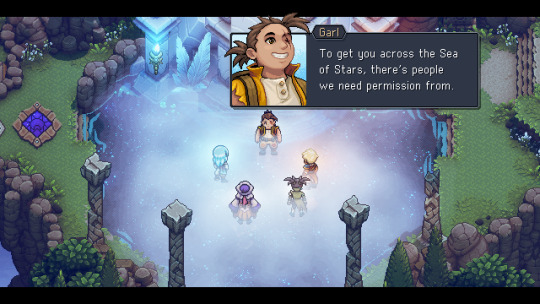

Information that the Elder Mist probably could have just given us himself. Garl got it from a vision that Elder Mist's spring gave him. But if Elder Mist told us, then there wouldn't be a reason for Garl to use Borrowed Time.
The prophecy isn't for achieving the goal. It's for us. It's using him as a superfluous exposition vessel so that we can have one last ride with our bestie. T-T


Of course, Serai still has portals galore and we just established that she can use them to cross the globe; Between that and the Torment portal, there doesn't seem to be much limiting her in terms of size, distance, or duration. But we'll ignore that.
Maybe it's personal. For a whatever she is, asking to use her portal could be like asking someone to take their pants off. It might be a more intimate request than it seems. Who knows?

What, again? We were already so far behind on figuring this shit out that the Oracle of Tides made fun of us for it.
*sigh* We really are the remedial course of legendary super-warriors, aren't we?
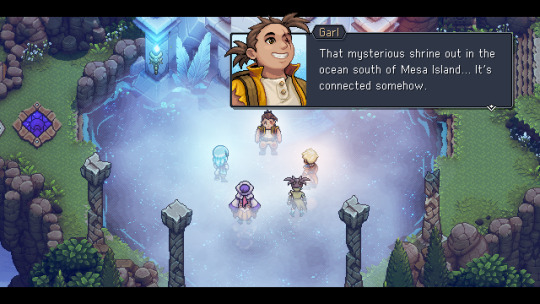
Yeah, the Sky Bridge or Sky Shrine or something. I found it while I was faffing about but there wasn't anything to do there. If up is where we need to go, then that seems like our best ticket to the sky.

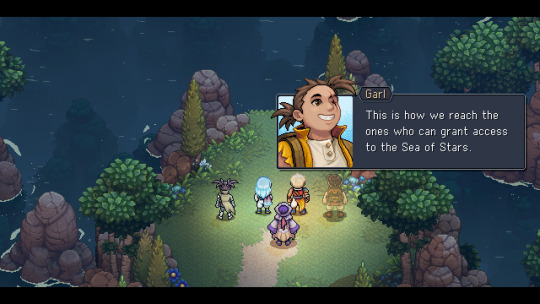
Is there a bridge? Is there a lever on the other side that can send over a bridge? Because one of us can portal and hit the lever, if there is. Or one of us can turn into a huge bird and hit the lever. Either way, we have options to send individual members of the group across; We's just lacking a way to get the whole group over there.

My prophecy did say I can make paths across water. That's been bugging me, since all I did was take a swing at Fleshy, then turn into a glow-ball and fly. Both satisfying experiences but neither really counts as "making paths across water".
But maybe this is my time.
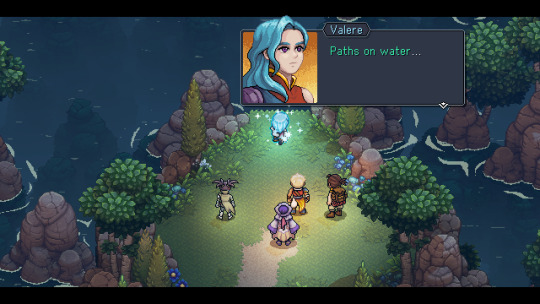
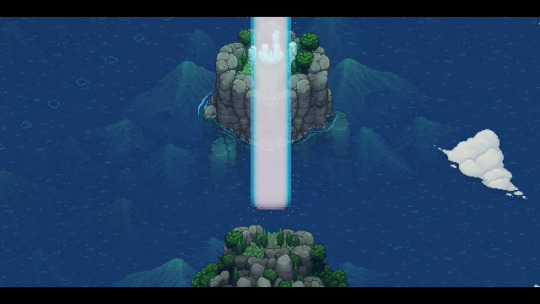
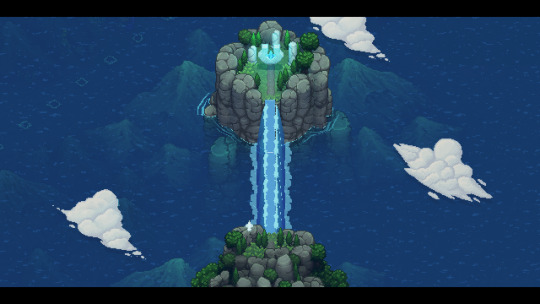
The Versus community is going to lose their fucking minds.
Well, actually, they've probably already calc'd me at Solar System level via a disingenuous estimate of me moving the moon around, as if I were doing that with my bare hands.
Point is, I'm really cool and we should all shower me with praise. That's the point. I am ready to accept your praise.

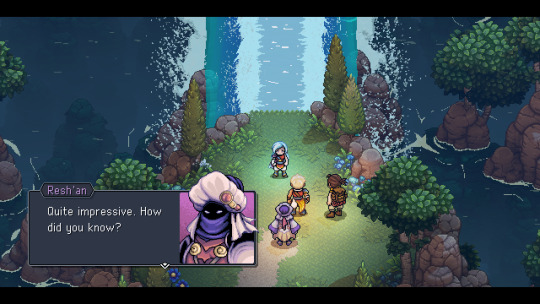
Yes. Yeees. Feed the ego.
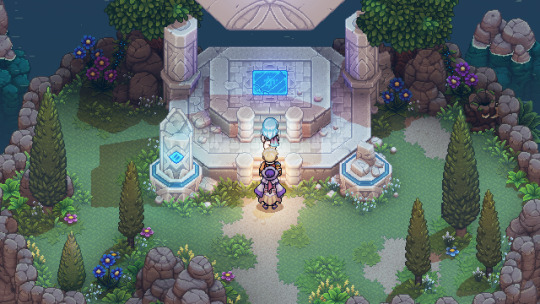
That is definitely a teleporter. We must be getting close because you don't enter the Kingdom of Zeal until the last third of the game.
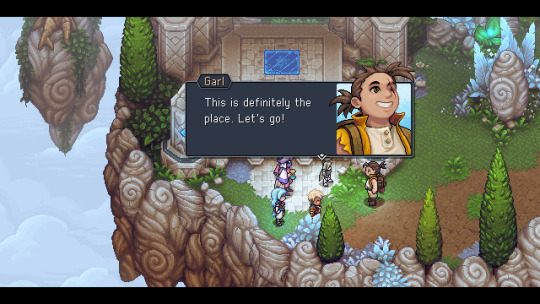
I wonder what keeps these chunks of earth aloft. Is it the spiral pattern? I bet it's the spiral pattern. There's probably some kind of... inherent mysticism in....
That's stupid. I'll just ask Teaks when I get a chance.
In any case, I guess we're here to get somebody's permission to cross the Sea of Stars. Let's get to work.
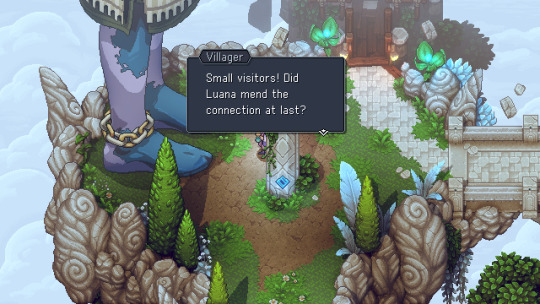
I did, yes. I'm not 100% sure that Luana reincarnated into me but I'm willing to create that as dogma. Or, like, maybe I'm a timeline variant of her. I don't know, but I am eager to get that rumor started.
Also, you are way too huge. Could you. Like. Be less huge? These platforms must be tiny for a person of your size. Y'all must have incredible nimbleness to be comfortable walking around on these tiny little stepping stones.
Like mountain goats.

This inn is like a closet for you. How do you people live like this?
You have a Wheels table. How do you even see the dials? Your ridiculous size is so incongruent to the layout of your city! How did this happen!?

Alright, team. Here's the plan:
Garl's in charge. He's making the plans. I've got nothing. I barely even know what we're doing here.
The important thing is that we stay on-task so that Garl's enchantment doesn't wear off. But also that we take our sweet time carrying out our task so that we can maximize the amount of time we have left with our dear friend.
Think of this like a contract assignment with an hourly wage. As long as we're working on the job, we keep getting paid until the moment it's done. But there's no clear deadline for when that has to be, so sandbag it.
9 notes
·
View notes
Text

reading your daily horoscope. making up constellations. going where the wind takes you. life on the road. lazy summer afternoons. a ring on every finger. silver necklaces and patterned shirts. a collage of posters and concert tickets. the alleged van. an impulsive tattoo, given by a friend. talking late into the night. a smoky laugh. the mysteries of the universe. dying your own hair. hands covered in clay. befriending the neighbourhood cats.
statistics.
full name: felix tagana-aguirre nickname(s): fe (fee) name meaning: happy, fortunate age: twenty-six date of birth: june 29th star sign: cancer place of birth: castle village, galdoran current location: wherever the road takes them (but, like, pelican town) gender: non-binary pronouns: he/they sexual orientation: pansexual occupation: travelling merchant family: nicanor “nic” tagana-aguirre (father), sara tagana-aguirre (mother), carmen tagana-aguirre (older sister) education level: high school graduate (barely) living arrangements: lives in his van (which is also his shop) loved gifts: coconut, spicy eel, clay hated gifts: mayonnaise, coleslaw, raisins
biography.
Felix was born in Castle Village, a distant town known for its community of adventurers.
His mother and father, Sara and Nic, perhaps aren’t the sort of people you’d immediately associate with heroics and monster slaying. They’re both bermuda-shorts-wearing, fanny-pack-owning, glasses-on-a-string-around-the-neck types, aggressively pleasant and unfailingly kind. Their interest is less in killing monsters as it is in researching them, and they established the local tourist trap museum as a means of displaying all they've discovered.
Always an aimless kind of kid, Danny imagined they’d spend most of their life working the desk at his parents' museum, because it was easy and didn't require any major planning on their part. Their mom and dad are very supportive of their youngest child, to the point where it might've actually been hindering their ability to grow as adult, so Felix never felt any great pressure to get their life started.
Ultimately his impetus to leave Castle Village came on the back of the breakup of his first major relationship (they decided to just be friends, which is chill). Felix finally got around to fixing up the old van that'd sat on his parents' drive for the last eight years, and set off on his travels.
They’ve been roaming around the Ferngill Republic for the better part of a year now, collecting things from all over the continent and selling them to the residents of the small towns he passes through. It's a pretty sweet existence, all things considered, and he wonders if he'll ever feel inclined to settle in one place again.
other things.
Felix tunes into Welwick’s Oracle on the radio every day, and always checks his horoscope in the newspaper (even if he doesn’t intend to buy it).
Their van is a complete jalopy, but the exterior is painted with a mural of the night sky, done by their own hand.
He’s a pretty good potter, but would probably be a great potter if he spent more time practising… or if he had somewhere to fire the ceramics he makes.
A not-insignificant portion of the van's interior storage is taken up by tapes. Felix keeps telling themselves they’ll upgrade their music system to a CD player one of these days, but they never quite get around to it.
Even though he's only in town a couple of days a week, Felix is some kind of videogame savant, and currently holds the high score on the Journey to the Prairie King arcade machine at the Stardrop Saloon.
Sincerely believes in all things supernatural, and is very knowledgeable on the topic thanks to his parents.
They’ve played bass since they were a kid, and used to be in a band with their high school friends (they weren’t very good).
6 notes
·
View notes
Text
Deploying Enterprise-Grade AI Agents with Oracle AI Agent Studio
In our previous blog, we introduced Oracle AI Agent Studio as a powerful, no-code/low-code platform for building intelligent Gen AI solutions. In this follow-up, we go a step further to show you how organizations can deploy enterprise-grade AI Agents to solve real-world business problems across Finance, HR, Procurement, and beyond.
Whether you're starting small or scaling up, Oracle AI Agent Studio offers the perfect blend of agility, enterprise readiness, and intelligent automation. Here's how to turn your AI ideas into tangible business impact.
Recap: What is Oracle AI Agent Studio?
Oracle AI Agent Studio enables business and IT teams to build, deploy, and manage AI-powered agents that connect with Oracle Fusion Applications, databases, REST APIs, and external systems.
Key capabilities include:
Prebuilt templates and visual flows
LLM (Large Language Model) integration for natural conversation
Secure deployment on OCI (Oracle Cloud Infrastructure)
Out-of-the-box connectors to Oracle Fusion apps
Context-aware decision making and workflow automation
Real-World Use Cases in Action
Use Case 1: Finance – Expense Submission Agent
The Challenge: Manual expense submissions are time-consuming and prone to policy violations.
The AI Solution: An AI Agent that uses OCI Vision to extract data from uploaded receipts and Oracle Fusion APIs to auto-submit expenses for approval.
Business Impact:
70% reduction in submission time
Improved policy compliance
Higher user satisfaction and reduced helpdesk load
Use Case 2: HR Chatbot
The Challenge: Employees often struggle to find and understand HR policies.
The AI Solution: A conversational agent integrated with Oracle Digital Assistant and RAG (retrieval-augmented generation) to answer policy-related queries using personalized context.
Business Impact:
24x7 self-service support
60% drop in HR service tickets
Better employee experience
Use Case 3: Procurement – Supplier Selection
The Challenge: Vendor selection processes are often inconsistent and time-consuming.
The AI Solution: An AI Agent that evaluates vendor responses using scoring criteria defined by procurement teams, integrating with Oracle Sourcing and external bid portals.
Business Impact:
Accelerated RFQ evaluations
Data-driven, unbiased decisions
Transparent and auditable selection
Building Smart Agents: Best Practices
Start Small: Begin with a well-defined, low-risk use case to validate impact.
Prioritize Integration: Use Oracle Fusion connectors and REST APIs for deep system access.
Prepare Your Data: Structured, clean data ensures better results from Gen AI models.
Iterate Fast: Use user feedback to fine-tune agent workflows and conversation paths.
Design for Security: Apply role-based access and audit trails from the start.
Conclusion
Oracle AI Agent Studio is not just a development platform, it's a catalyst for AI-driven business transformation. Whether it's streamlining expense reporting, enabling smarter procurement, or empowering employees with instant answers, the potential is endless.
Start small, validate early, and scale with confidence.
#OracleGenAI #OracleAIStudio #AIAgents #FusionCloud #DigitalTransformation #ConneqtionGroup #SmartAutomation #OCI #EnterpriseAI
0 notes
Text
Boost Your Tech Career with a Comprehensive Java Training and Internship Program

In today’s fast-paced digital world, programming skills are more than just an added advantage—they are essential. Among the myriad programming languages, Java stands out as one of the most robust, versatile, and in-demand languages used across industries, from mobile apps to enterprise-level software. If you're a student, fresher, or even a working professional looking to transition into software development, enrolling in a Java training and internship program can be your golden ticket to a successful IT career.
Why Learn Java?
Java is one of the oldest and most powerful programming languages still actively used today. It runs on billions of devices and serves as the backbone of many enterprise systems, Android apps, web servers, and more. Here's why Java continues to be a top choice for developers and organizations:
Platform Independence: Java is a "write once, run anywhere" language, meaning code written in Java can run on any system with a Java Virtual Machine (JVM).
Strong Community Support: With millions of developers worldwide, help, documentation, and updates are always accessible.
Versatile Applications: From banking software to gaming applications and Android development, Java is everywhere.
High Demand: Companies across the globe constantly look for skilled Java developers, making it a highly employable skill.
What is a Java Training and Internship All About?
A Java training and internship is a structured learning program designed to teach both foundational and advanced concepts in Java programming, followed by real-time industry exposure through internships.
This program typically includes:
In-Depth Java Training: Covering topics such as Core Java, OOPs (Object-Oriented Programming), Collections Framework, Exception Handling, Multithreading, JDBC, and GUI programming.
Advanced Java Concepts: Including Servlets, JSP (JavaServer Pages), Spring Framework, Hibernate, RESTful APIs, and Microservices.
Project Development: Hands-on development of live projects to implement what you’ve learned.
Internship Experience: Working with a tech company or development team to gain practical, real-world experience.
Certification: A recognized certificate to showcase your skills to future employers.
Key Skills You’ll Learn
Participating in a Java training and internship program can help you master several critical skills that are valuable in the IT industry. These include:
1. Programming Fundamentals
You will start with understanding how Java works, its syntax, data types, variables, operators, and flow control statements.
2. Object-Oriented Programming (OOP)
Java is an object-oriented language. You'll learn about classes, objects, inheritance, polymorphism, encapsulation, and abstraction—concepts that form the base of modern software development.
3. Database Integration
Using JDBC and ORM tools like Hibernate, you’ll learn how Java applications interact with databases such as MySQL, Oracle, or PostgreSQL.
4. Web Development
You'll gain skills in building Java-based web applications using Servlets, JSP, and frameworks like Spring MVC or Spring Boot.
5. Debugging and Testing
Understand how to debug Java applications, write unit tests using JUnit, and ensure that your code is reliable and efficient.
6. Project Management Tools
Gain experience using Git, GitHub, Maven, and other tools commonly used in development environments.
Benefits of Joining a Java Training and Internship Program
Enrolling in such a program offers multiple advantages beyond just learning how to code.
✅ Structured Learning
The course is designed by experts and follows a curriculum that gradually takes you from beginner to advanced level.
✅ Hands-on Experience
Working on live projects and real-world problems enhances your problem-solving ability and builds your portfolio.
✅ Professional Mentorship
Access to experienced mentors and instructors helps clarify doubts, understand complex topics, and receive valuable career guidance.
✅ Resume Building
The internship experience, along with a certificate of completion, significantly boosts your resume and makes you stand out to employers.
✅ Job Opportunities
Many internship programs have placement assistance or allow top performers to get absorbed into the company itself.
Who Should Join?
This program is suitable for:
Students in B.Tech/BCA/MCA or other CS-related streams who want to strengthen their programming base.
Fresh graduates looking to land their first job in software development.
Working professionals aiming to shift from non-tech roles or other languages into Java-based development.
Freelancers and entrepreneurs who want to build Java-based applications independently.
What a Typical Training and Internship Program Includes
While the details may vary by provider, a good Java training and internship program typically offers:
Component
Details
Duration
8 to 16 weeks
Mode
Online / Offline / Hybrid
Learning Hours
2-3 hours/day or weekend batches
Tools Covered
IntelliJ IDEA, Eclipse, GitHub, MySQL, Maven
Projects
E-commerce website, Online Exam Portal, Chat App, etc.
Certification
Yes – with performance evaluation
Placement Support
Resume building, mock interviews, job referrals
How to Choose the Right Program?
When selecting a Java training and internship program, consider the following:
Reputation of the Institution: Choose a training center or ed-tech platform with positive reviews and a proven track record.
Curriculum Quality: Ensure that the course covers both Core and Advanced Java, along with real-time projects.
Internship Opportunities: Look for programs that offer internships with reputed companies.
Post-training Support: Some programs offer job placement help or career counseling—this is a big plus.
Affordability: Check if the program is within your budget and whether it offers EMI or scholarship options.
Real Career Impact
Those who complete the training and internship successfully often find career paths such as:
Java Developer
Backend Developer
Android Developer (Java-based)
Software Engineer
Full Stack Developer
Technical Consultant
With time and experience, you can grow into roles like Team Lead, Solution Architect, or even Product Manager in IT companies.
Final Thoughts
Investing your time and effort in a structured learning program can transform your career path. Java is more than just a programming language—it's a career catalyst. Whether you want to build enterprise software, Android applications, or simply add a valuable skill to your resume, a Java training and internship program provides the knowledge, experience
0 notes
Text
A Day in the Life of an Oracle Fusion Financials Adviser.

Oracle Fusion Financials is an important pall- grounded fiscal operation result that supports global companies in streamlining operations, adding delicacy, and icing compliance. But behind the scenes of every successful perpetration or smooth- running finance module is a devoted Oracle Fusion Financials Adviser. Curious what their day looks like.
8:00 AM – Morning Planning and Review
The adviser checks emails for customer updates, internal dispatches, and system cautions. They log into their design operation tools( like Jira or Asana) to review pending tasks and prioritize conditioning for the day.However, those come top precedents, If there are any late batch job crimes or fiscal report issues.
9:00 AM – diurnal Stand- Up with the Project Team
Next comes the diurnal stage- up meeting. Whether working in an perpetration, support, or upgrade part, advisers generally join a 15- to 30- nanosecond call with platoon members including business judges, specialized advisers , and design directors. The discussion revolves around what was completed history, moment's pretensions, and any blockers that need resolution.
10:00 AM – customer conversations and demand Gathering
One of the most pivotal corridors of the adviser 's part is interacting with guests. During this time, the adviser may join virtual meetings to
Understand new business conditions
Explain module capabilities(like Accounts Payable, General Ledger, or Cash Management)
Demonstrate functionality
Document gaps or needed customizations
Clear communication is crucial then, as the adviser must align Oracle Fusion capabilities with the customer’s unique business processes.
11:30 AM – Configuration and Solution Design
In this phase, they
Configure checks, map of accounts, and fiscal reporting structures
Set up workflows and blessing scales
Customize reports or dashboards using OTBI or BI Publisher
Coordinate with specialized brigades for integrations or custom results
Each change is generally tested in a sandbox or test terrain to validate its effectiveness before promoting to product.
1:00 PM – Lunch Break and a Bit of Breathing Room
Indeed a busy adviser needs to recharge! After a quick lunch, it’s time to get ready for the alternate half of the day — frequently filled with troubleshooting and testing.
2:00 PM – UAT Support and Issue Resolution
still, the adviser works nearly with end druggies to
If the design is in a stoner Acceptance Testing( UAT) phase.
Guide them through test scripts
Capture and resolve blights
Document results and update test scripts
For ongoing support places, this time may be spent handling tickets through a helpdesk system, assaying root causes of fiscal disagreement, or aiding with month- end conditioning.
4:00 PM – Attestation and Reporting
Before belting up, the adviser updates attestation. This includes
Functional design documents( FDDs)
Configuration workbooks
Status reports for design stakeholders
Knowledge transfer documents for support brigades
Maintaining clean, up- to- date attestation ensures long- term maintainability and design success.
5:30 PM – Wind Down and Look Ahead
As the day closes, the adviser reviews accomplishments, checks hereafter’s timetable for meetings or deadlines, and makes notes for the coming day’s precedences. occasionally, they’ll spend time reading Oracle Cloud release notes or attending webinars to stay current with the rearmost features and updates.
Final studies
Being an Oracle Fusion Financials Adviser is a dynamic and satisfying part. It blends fiscal wit, specialized know- style, and strong communication chops. Whether helping a global enterprise close its books briskly or supporting original businesses in espousing pall financials, the adviser plays a vital part in digital finance metamorphosis. Still, anticipate every day to offer new challenges and the satisfaction of working them, If you are considering a career in this field. To Your bright future join Oracle Fusion Financials.
#jobguarantee#oraclefusion#oraclefusionfinancials#financecareers#financejobs#100jobguarantee#hyderabadtraining#erptraining#careergrowth#erptree
0 notes
Text
We Ditched Email Support for IT Service Management—and Never Looked Back

In the early days of running a business, handling IT support through email often feels like the easiest solution. However, as client demands grow and your team expands, email quickly becomes a bottleneck that slows down operations and reduces efficiency.
At Avion Technology, based in Schaumburg, Illinois, we experienced this challenge firsthand. Email support led to delays, miscommunication, and lost productivity. To overcome these issues, we transitioned to a structured, integrated IT Service Management (ITSM) approach—leveraging custom-built web and mobile solutions alongside internal automation, all aligned with our digital expertise. Since then, we’ve never looked back.
The Problem with Email Support
Many growing businesses across Chicago and the Midwest still rely heavily on email for their tech support needs. Here’s what we encountered using email-based support:
Support tickets lost in crowded inboxes
No way to track ticket priority, status, or resolution time
Duplicate requests causing confusion
Lack of visibility into support team performance
No automation to manage common workflows
This reactive system simply couldn’t scale with our growth. As a result, our response times slowed, and customer satisfaction suffered.
Our Shift to Smarter Support
At Avion Technology, we help clients build custom software and automated workflows every day. So, we applied the same expertise internally to create a centralized IT support system based on IT Service Management principles.
We developed a unified support workflow featuring:
Custom web applications for logging and tracking tickets
Mobile apps for seamless team communication and approvals
Workflow automation to handle routing, escalations, and service-level agreements (SLAs)
Data dashboards for real-time visibility and performance analytics
How We Did It Using Avion’s Core Services
Our transition from email to ITSM was not about purchasing off-the-shelf software. Instead, we leveraged our own service offerings to build a smarter, integrated solution tailored to our needs:
Custom Web Development: We built a dedicated web portal for employees and clients to submit and track IT requests, complete with unique IDs, categories, and priority levels.
Mobile App Development: Our support team can respond on the go, receiving push notifications and accessing tickets anytime via mobile devices.
Workflow Automation: Automated ticket escalations, reminders, and status updates ensure no critical issue falls through the cracks.
Cloud Integration: Our ITSM system connects with CRM, project management tools, and documentation platforms for smooth, centralized operations accessible from anywhere.
All of these services are part of what we offer our clients, showcasing our hands-on expertise.
The Results? Game-Changing
Since ditching email support in favor of IT Service Management powered by our custom solutions, we’ve seen:
50% improvement in response times
Increased ticket resolution accuracy
70% reduction in missed or delayed responses
Higher employee and client satisfaction
Our internal team is more efficient, our clients are happier, and we have created a replicable model that other businesses can adopt.
Ready to Build a Custom ITSM System for Your Business?
Whether you’re a startup in Schaumburg, a mid-sized company in Chicago, or a larger enterprise with distributed teams, Avion Technology can help you develop a scalable, custom IT support platform featuring:
Web and mobile app development
User-friendly mobile interfaces
Workflow automation and integration
Cloud-based solutions for accessibility
We don’t believe in one-size-fits-all software. Instead, we tailor solutions around your unique workflows, backed by our U.S.-based development expertise.
Related Avion Technology Services You Can Leverage
Custom Software Development
Digital Transformation
Salesforce Development
Oracle Fusion Cloud
Let’s Build Your ITSM System—the Smart Way
Are you still relying on cluttered inboxes and missed emails to manage support requests? It’s time to upgrade. We’ll help you design a custom ITSM system tailored to your workflows, featuring automation, performance tracking, and mobile access—just like we did for ourselves.
Schedule a free consultation today.
Frequently Asked Questions
1. Does Avion Technology offer off-the-shelf helpdesk tools? No. We specialize in custom web and app-based ITSM systems tailored specifically to your business operations.
2. Can Avion integrate IT support systems with our CRM or ERP? Absolutely. We can integrate your support platform with Salesforce, Oracle Fusion Cloud, or your existing enterprise tools.
3. Do you work with businesses outside Illinois? Yes. While based in Schaumburg, IL, we serve clients throughout the Midwest and nationwide.
4. What size companies benefit most from custom ITSM systems? Our solutions suit startups, mid-sized companies, and growing enterprises that have outgrown email or basic ticketing tools.
5. How long does a project like this take? Most projects launch within 4 to 8 weeks, depending on complexity. We provide end-to-end support from planning to post-launch.
#ITServiceManagement#TechSupport#CustomSoftware#WorkflowAutomation#DigitalTransformation#BusinessGrowth#SchaumburgIL#ChicagoTech#CloudSolutions#SoftwareDevelopment#MobileAppDevelopment#Automation#TechInnovation#CustomerExperience#SupportSystem#EnterpriseIT#TechTrends#MidwestBusiness\#AvionTechnology
0 notes
Text
Industry-Wise Comparison: Best ERP Solutions in Dubai for Retail, Manufacturing & Services

In today’s fast-paced and competitive business environment, companies in Dubai are increasingly turning to Enterprise Resource Planning (ERP) systems to streamline operations, reduce costs, and gain a competitive edge. However, not all ERP solutions are created equal — especially when considering the unique needs of different industries. Whether you operate in retail, manufacturing, or services, choosing the right ERP solution tailored to your business model is crucial.
In this blog, we provide an industry-wise comparison of the best ERP solutions in Dubai for retail, manufacturing, and service sectors, helping you make an informed decision.
1. Retail Industry: ERP Solutions That Optimize Sales & Inventory
Key Needs:
Real-time inventory tracking
Multi-store management
POS integration
Customer loyalty programs
Demand forecasting
Top ERP Picks for Retail in Dubai:
SAP Business One: A popular choice among mid-sized retailers in Dubai, SAP Business One offers robust inventory and sales management features, integrated POS, and customer data analysis tools.
Odoo ERP: Known for its flexibility, Odoo’s retail module covers everything from POS to warehouse management and CRM, making it ideal for small to mid-sized retailers.
Microsoft Dynamics 365: Offers real-time analytics, inventory optimization, and seamless e-commerce integration for retailers aiming to scale.
Why It Matters: Dubai’s retail sector is dynamic, driven by tourism and high consumer expectations. An ERP system with strong inventory and sales capabilities can boost operational efficiency and customer satisfaction.
2. Manufacturing Industry: ERP Solutions That Power Production & Quality Control
Key Needs:
Bill of Materials (BOM) management
Production scheduling
Quality control and compliance
Supply chain integration
Cost tracking
Top ERP Picks for Manufacturing in Dubai:
Epicor ERP: Tailored for manufacturers, Epicor offers advanced modules for production planning, inventory control, and supply chain visibility.
Infor CloudSuite Industrial (SyteLine): Widely used in Dubai’s manufacturing sector, it offers tools for discrete and process manufacturing, with strong support for compliance and automation.
Oracle NetSuite: Provides integrated manufacturing, finance, and supply chain solutions — ideal for growing manufacturers looking to scale efficiently.
Why It Matters: Dubai’s industrial zones and free trade areas are home to a growing number of manufacturers. A reliable ERP system ensures streamlined production, cost control, and regulatory compliance.
3. Service Industry: ERP Solutions That Streamline Client Management & Operations
Key Needs:
Project management
Resource allocation
Time and billing
CRM and support ticketing
Financial reporting
Top ERP Picks for Service-Based Businesses in Dubai:
Zoho ERP: Best for small service providers, Zoho offers integrated project management, invoicing, and CRM — all in one affordable platform.
Microsoft Dynamics 365 Business Central: Provides excellent tools for project costing, time tracking, and customer relationship management.
Oracle Fusion Cloud ERP: Suitable for large service organizations, this ERP offers end-to-end service management, contract billing, and advanced financials.
Why It Matters: From legal firms to IT consultancies, service providers in Dubai need ERP systems that can handle complex projects, client interactions, and billing with precision.
Conclusion: One Size Doesn’t Fit All
When it comes to choosing the Best ERP Solutions Dubai , industry-specific requirements should guide your decision. Retailers benefit most from POS integration and inventory tools, manufacturers require detailed production and supply chain features, while service companies need strong project and client management capabilities.
Before selecting an ERP system, assess your business size, budget, scalability needs, and compliance requirements. Partnering with a local ERP consultant in Dubai can also help tailor the solution to meet your specific goals.
0 notes
Text
ServiceNow bets on unified AI to untangle enterprise complexity
New Post has been published on https://thedigitalinsider.com/servicenow-bets-on-unified-ai-to-untangle-enterprise-complexity/
ServiceNow bets on unified AI to untangle enterprise complexity
ServiceNow has opened its Knowledge 2025 conference with a brand new AI platform. The ambition is clear: to give businesses a single, coherent way to get all their different AI tools and intelligent agents working together, right across the company.
This isn’t just a fresh lick of paint; we’re talking deep-rooted new features and much cosier relationships with the likes of NVIDIA, Microsoft, Google, and Oracle. The aim? To finally help businesses orchestrate their operations with genuine intelligence, and it seems some big names like Adobe, Aptiv, the NHL, Visa, and Wells Fargo are already seeing it pay off.
Most business leaders you speak with today will tell you they’re wrestling with a tangled mess of complexity. We’ve got systems that don’t talk to each other, data all over the shop, often no real game plan for AI, and that constant pressure to do more with less.
ServiceNow believes AI innovation is the answer here, a way to fundamentally change how businesses run – making them more resilient, more efficient, and helping them get a handle on costs, all while chipping away at that mountain of tech debt and operational guesswork.
However, the company rightly points out that just throwing AI at the problem won’t cut it. You need a clear vision and a real commitment to using ‘agentic AI’ – think smart, autonomous AI helpers – all underpinned by a platform built for what’s next.
For the companies already diving in, these AI agents are apparently delivering the goods, boosting productivity in all sorts of ways. And it’s hitting the bottom line: ServiceNow’s own research, the Enterprise AI Maturity Index, shows that 55% of organisations using this kind of agentic AI have seen their gross margins improve. That’s a hefty jump compared to the mere 22% for those not yet on board.
Bill McDermott, Chairman and CEO of ServiceNow, commented: “ServiceNow is igniting a new era of enterprise transformation with the ServiceNow AI Platform. We’re unleashing the full power of AI, across any industry, any agent, any workflow.
“For decades, CEOs have wanted technology to accelerate the speed of business transformation. With this next generation architecture, we finally have the foundation to run the integrated enterprise in real time. We are the only ones who can orchestrate AI, data, and workflows on a single platform.”
It’s not just talk; some big names are already putting ServiceNow’s agentic AI through its paces:
Adobe is using it to speed up automation in IT and workplace services. Think AI agents handling common but time-consuming requests like password resets. The upshot? Fewer support tickets, quicker fixes, and happier, more productive staff. They’re also looking to add ServiceNow’s Workflow Data Fabric and RaptorDB to chew through their data even faster.
Aptiv, known for its work in critical industries, is teaming up with ServiceNow. Their new partnership aims to blend ServiceNow’s AI smarts with Aptiv’s edge intelligence to boost automation and keep things running smoothly when it really matters.
The NHL is, in their words, “going all in on ServiceNow AI.” The goal is to streamline how they operate, making life easier for employees needing quick solutions and helping arena technicians give fans an even better game day.
Wells Fargo has rolled out ServiceNow AI with RaptorDB to automate tricky workflows and process huge amounts of data in real-time. This, they hope, will lead to smarter, AI-driven decisions right across the bank.
Visa is set to bring in ServiceNow Disputes Management – a system they built together. It uses AI agents on the ServiceNow platform to help resolve payment disputes. And it seems they like what they see, as Visa plans to use ServiceNow’s AI to run its own managed dispute services.
So, what’s under the bonnet of this reimagined ServiceNow AI Platform? It’s built to bring together intelligence, data, and the actual doing – the orchestration. The idea is to help companies move beyond a few scattered AI experiments to making AI a core part of how they operate.
A big piece of this puzzle is what they call a “smart, conversational AI Engagement Layer.” This lets people get complex tasks done across different systems by tapping into ServiceNow’s Knowledge Graph, Workflow Data Fabric, and AI Agent Fabric. These clever bits are designed to connect smoothly with all sorts of enterprise data systems and AI frameworks.
This launch is clearly just the start of a whole wave of new stuff. We’re seeing expanded partnerships, literally thousands of ready-made AI agents, and the introduction of the ServiceNow AI Control Tower.
Alongside the main platform, ServiceNow is adding some additional firepower:
AI Control Tower: Think of it as a central dashboard for managing everything AI – whether it’s ServiceNow’s own AI, or tools from other providers. It’s about keeping an eye on things, making sure it’s secure, and getting real value from every AI agent, model, and workflow, all in one place. The goal is better teamwork, solid oversight, and automation that actually scales.
AI Agent Fabric: This is the communication network for a company’s AI ecosystem. It’s about getting AI agents – no matter who built them (ServiceNow, partners, or your own tech teams) – to work together smoothly across different tools, teams, and even vendors like Microsoft, NVIDIA, Google, and Oracle. They can share information, coordinate jobs, and generally get things done more effectively together.
Next-generation CRM: They’re also beefing up their Customer Relationship Management offering with more AI. The plan is to bring sales, order fulfilment, and customer service onto one platform. This means businesses can shift from just reacting to customer problems to proactively engaging with them at every stage, from quoting a price right through to renewal.
Apriel Nemotron 15B: This new reasoning LLM is built with NVIDIA. It’s designed to power intelligent AI agents that can think and act at scale, promising high accuracy, quick responses, lower running costs, and generally faster, smarter AI for everyone.
And it’s not just about the tech; ServiceNow is also doubling down on people with the launch of ServiceNow University. This is their bid to give organisations the tools to upskill their workforce, helping them not just unlock individual potential but also drive real business change.
At the end of the day, even the smartest AI needs smart people to make the most of it.
See also: UAE to teach its children AI
Want to learn more about AI and big data from industry leaders? Check out AI & Big Data Expo taking place in Amsterdam, California, and London. The comprehensive event is co-located with other leading events including Intelligent Automation Conference, BlockX, Digital Transformation Week, and Cyber Security & Cloud Expo.
Explore other upcoming enterprise technology events and webinars powered by TechForge here.
#2025#ADD#adobe#agent#Agentic AI#agents#ai#ai & big data expo#ai agent#AI AGENTS#AI innovation#ai platform#ai tools#amp#applications#architecture#arena#Artificial Intelligence#automation#autonomous#autonomous ai#bank#Big Data#board#Business#california#CEO#change#Children#Cloud
0 notes
Text
What Are Server Management Services?
Server management services are professional IT services that handle the monitoring, maintenance, optimization, and security of servers—whether they are physical, virtual, cloud-based, or hybrid. These services ensure that your servers are always operational, secure, and performing at peak efficiency.
🔧 What Do Server Management Services Typically Include?
24/7 Monitoring & Alerts
Constant supervision of server health, uptime, performance, and resource usage.
Immediate alerts for issues like downtime, overheating, or unusual activity.
OS & Software Updates
Regular updates for the operating system and installed applications.
Patch management for security and stability.
Security Management
Firewall configuration, antivirus/malware protection, and intrusion detection.
Regular vulnerability scans and compliance support.
Backup & Disaster Recovery
Scheduled data backups.
Recovery solutions for data loss or server failure.
Performance Optimization
Load balancing, caching, and resource tuning to ensure optimal server speed and efficiency.
User & Access Management
Management of user accounts, permissions, and authentication settings.
Technical Support
On-demand help from system administrators or support engineers.
Ticket-based or live response for troubleshooting.
Server Configuration & Setup
Initial setup and provisioning of new servers.
Configuration of server roles (web, database, mail, etc.).
🏢 Who Needs These Services?
SMBs and enterprises without in-house IT teams.
E-commerce websites needing 24/7 uptime.
Data-driven organizations with compliance requirements.
Startups seeking to scale IT infrastructure quickly.
⚙️ Types of Servers Managed
Windows Server, Linux Server
Dedicated servers & VPS
Database servers (MySQL, MSSQL, Oracle)
Web servers (Apache, Nginx, IIS)
Cloud servers (AWS, Azure, GCP)
Would you like a comparison of different server management plans or providers?

0 notes
Photo

The premise of the critically panned 1996 film Bio-Dome is closer to our reality than I’d like to admit. In it, the planet has become so polluted it’s rapidly becoming unsuitable for human life. (Sound familiar?) With the backing of a powerful investor, a group of environmental scientists seal themselves in an enormous enclosed terrarium for a year as part of a climate experiment. In true ’90s slacker comedy fashion, the two stoner protagonists accidentally get themselves locked inside the Bio-Dome, and, of course, wreak havoc. Though the film’s plot is fictional, its premise is loosely based on the real-life Biosphere 2, a $150-million hermetically sealed environmental system in Oracle, Arizona, with wilderness biomes including a rainforest, desert, grassy savannah, mangrove wetlands, and a 25-foot-deep ocean with a coral reef, in which eight researchers actually lived between 1991 and 1993. The experiment famously ended in disaster when rising carbon dioxide levels and crop failure threatened the participants’ lives. While geodesic domes with controlled environments designed to replicate Earth’s ecosystems seemed eccentric in the early 1990s, when climate change was just starting to enter the mainstream discourse, in the decades since, multimillion- or billion-dollar developments that bring the natural world—or simulations of it—inside have become increasingly common. In some cases, like with "the world’s largest indoor desert" in Omaha, Nebraska, or Montreal’s Biosphère (housed in the Expo 67 geodesic dome designed by Buckminster Fuller), these attractions are centered around education and research. Then, there’s a slightly different iteration developed purely for recreation. As global temperatures rise and "unprecedented weather events" occur with increasing regularity, there might be a future where more of our outdoor recreation will be relegated to indoor simulations. In some ways, these built environments are case studies for how successfully (or unsuccessfully) natural environments can be replicated to facilitate the human pastimes—like surfing or skiing, even hiking—that rely on them. The indoor "beach" at the New Century Global Center in Chengdu—one of China’s most polluted cities—is illuminated by an artificial sun.Mitsubishi Heavy Industries Group’s Seagaia Ocean Dome was an early example of the over-the-top-faux-natural-environment-as-amusement-park phenomenon. Opened in 1993, the $1.8 billion facility, which was situated less than .2 miles from an actual beach in the coastal city of Miyazaki, Japan, was a Polynesia-themed marvel with a 129,166-square-foot man-made beach with sand from crushed marble and a wave machine capable of 200 surfable variations (in unsalted, chlorinated water). It closed in 2007, faltering under steep ticket prices and operational costs, but that wasn’t the end of the road for artificial beaches. There’s one at the colossal New Century Global Center in Chengdu, China, with space for more than 6,000 beachgoers to lounge under its fake sun. At Berlin’s Tropical Islands, which is housed in a 1938 airfield hangar, a massive screen with a photo of a blue sky hovers above a "sea" made up by three Olympic-size swimming pools. The indoor air temperature is kept in the high seventies. On the other end of the weather spectrum, there are indoor ski resorts like Ski Dubai, a 242,000-square-foot "snow park" in the Mall of the Emirates, where 30 to 40 tons of new snow are produced nightly to blanket five imitation ski slopes, or Big Snow American Dream, North America’s only indoor ski resort, in New Jersey. Ironically, the environmental impact of many of these climate-controlled facilities is significant; a 2013 report, for example, estimated that Ski Dubai’s annual greenhouse gas emissions equate to 900 annual round-trip flights from Dubai to Munich. Massive developments like Ski Dubai or Paradise Island Water Park that simulate natural environments in contained spaces pump tons of carbon into the atmosphere, only exacerbating the factors that increasingly threaten those places and make their conditions more hostile. Ski Dubai’s artificial snow is produced similarly to how faux snow is made at outdoor ski resorts.Christiana Moss of Studio Ma, an award-winning architecture and environmental design studio in Phoenix, Arizona, has some ideas about the way we should be approaching buildings that bring the outdoors indoors. As temperatures increase, especially in places like Phoenix, Moss believes more structures need to be suited to not only controlling contrasting indoor climates, but tempering them with the heat outside. "Increasingly, the realm of what you would consider indoors and what we consider outdoors needs to be expanded and blended to temper exterior temperatures," she says. "It’s about the layers of interior and exterior space.... It’s a huge opportunity for really rethinking and redesigning what we consider to be indoors and outdoors, what we consider to be responsible cities, and how we think about access to shade in daylight." The 3.14-acre Biosphere 2 laboratory includes "active research systems" such as ocean and desert environments and a rainforest ecosystem (pictured).Another major factor to consider is the growing body of research supporting the benefits of access to nature on physical and mental health. "In Eastern megacities, an indoor/outdoor environment is an easier way to access ‘natural’ space," says space architect Vittorio Netti, who works as a professor at University of Houston and also as an aerospace engineer at Axiom Space, referring to how for someone living in a cramped megacity, indoor "beaches" with real sand or enclosed "forests" with actual flora can provide easier access to elements of the natural world.Netti, who has spent significant time testing out simulated spaces for his work, believes that future luxury and quality of life will be defined by access to natural spaces. He stresses there are two overlooked areas in considering the design of enclosed "nature" simulations for humans: circadian rhythm and smell. To be truly convincing, faux natural environments should incorporate changes in light and darkness over a roughly 24-hour cycle. And they shouldn’t be sterile.The original Biosphere 2 experiment failed colossally when carbon dioxide levels in the self-contained bubble rose 10 times the normal atmospheric amount, making the enclosed ecosystem uninhabitable. In 2021, a Scientific American article that referred to the live-in terrarium as "effectively like a time machine that can preview a climate-altered Earth" detailed how, after a few decades and some significant retooling, the facility is finally living up to its potential as a site for important climate research. But the focus of its experiments are now centered on narrower questions about our real planet, rather than a man-made re-creation. According to astrobiologist Jacob Haqq Misra, who studies planet habitability and authored the book Sovereign Mars: Transforming Our Values Through Space Settlement, a dystopian vision of a future reliant on sealed ecosystems for "outdoor" recreation is more something of the public imagination than a prediction from actual experts. "The good news is, it would take a lot to make planet Earth uninhabitable," says Misra. Source link
0 notes
Photo

The premise of the critically panned 1996 film Bio-Dome is closer to our reality than I’d like to admit. In it, the planet has become so polluted it’s rapidly becoming unsuitable for human life. (Sound familiar?) With the backing of a powerful investor, a group of environmental scientists seal themselves in an enormous enclosed terrarium for a year as part of a climate experiment. In true ’90s slacker comedy fashion, the two stoner protagonists accidentally get themselves locked inside the Bio-Dome, and, of course, wreak havoc. Though the film’s plot is fictional, its premise is loosely based on the real-life Biosphere 2, a $150-million hermetically sealed environmental system in Oracle, Arizona, with wilderness biomes including a rainforest, desert, grassy savannah, mangrove wetlands, and a 25-foot-deep ocean with a coral reef, in which eight researchers actually lived between 1991 and 1993. The experiment famously ended in disaster when rising carbon dioxide levels and crop failure threatened the participants’ lives. While geodesic domes with controlled environments designed to replicate Earth’s ecosystems seemed eccentric in the early 1990s, when climate change was just starting to enter the mainstream discourse, in the decades since, multimillion- or billion-dollar developments that bring the natural world—or simulations of it—inside have become increasingly common. In some cases, like with "the world’s largest indoor desert" in Omaha, Nebraska, or Montreal’s Biosphère (housed in the Expo 67 geodesic dome designed by Buckminster Fuller), these attractions are centered around education and research. Then, there’s a slightly different iteration developed purely for recreation. As global temperatures rise and "unprecedented weather events" occur with increasing regularity, there might be a future where more of our outdoor recreation will be relegated to indoor simulations. In some ways, these built environments are case studies for how successfully (or unsuccessfully) natural environments can be replicated to facilitate the human pastimes—like surfing or skiing, even hiking—that rely on them. The indoor "beach" at the New Century Global Center in Chengdu—one of China’s most polluted cities—is illuminated by an artificial sun.Mitsubishi Heavy Industries Group’s Seagaia Ocean Dome was an early example of the over-the-top-faux-natural-environment-as-amusement-park phenomenon. Opened in 1993, the $1.8 billion facility, which was situated less than .2 miles from an actual beach in the coastal city of Miyazaki, Japan, was a Polynesia-themed marvel with a 129,166-square-foot man-made beach with sand from crushed marble and a wave machine capable of 200 surfable variations (in unsalted, chlorinated water). It closed in 2007, faltering under steep ticket prices and operational costs, but that wasn’t the end of the road for artificial beaches. There’s one at the colossal New Century Global Center in Chengdu, China, with space for more than 6,000 beachgoers to lounge under its fake sun. At Berlin’s Tropical Islands, which is housed in a 1938 airfield hangar, a massive screen with a photo of a blue sky hovers above a "sea" made up by three Olympic-size swimming pools. The indoor air temperature is kept in the high seventies. On the other end of the weather spectrum, there are indoor ski resorts like Ski Dubai, a 242,000-square-foot "snow park" in the Mall of the Emirates, where 30 to 40 tons of new snow are produced nightly to blanket five imitation ski slopes, or Big Snow American Dream, North America’s only indoor ski resort, in New Jersey. Ironically, the environmental impact of many of these climate-controlled facilities is significant; a 2013 report, for example, estimated that Ski Dubai’s annual greenhouse gas emissions equate to 900 annual round-trip flights from Dubai to Munich. Massive developments like Ski Dubai or Paradise Island Water Park that simulate natural environments in contained spaces pump tons of carbon into the atmosphere, only exacerbating the factors that increasingly threaten those places and make their conditions more hostile. Ski Dubai’s artificial snow is produced similarly to how faux snow is made at outdoor ski resorts.Christiana Moss of Studio Ma, an award-winning architecture and environmental design studio in Phoenix, Arizona, has some ideas about the way we should be approaching buildings that bring the outdoors indoors. As temperatures increase, especially in places like Phoenix, Moss believes more structures need to be suited to not only controlling contrasting indoor climates, but tempering them with the heat outside. "Increasingly, the realm of what you would consider indoors and what we consider outdoors needs to be expanded and blended to temper exterior temperatures," she says. "It’s about the layers of interior and exterior space.... It’s a huge opportunity for really rethinking and redesigning what we consider to be indoors and outdoors, what we consider to be responsible cities, and how we think about access to shade in daylight." The 3.14-acre Biosphere 2 laboratory includes "active research systems" such as ocean and desert environments and a rainforest ecosystem (pictured).Another major factor to consider is the growing body of research supporting the benefits of access to nature on physical and mental health. "In Eastern megacities, an indoor/outdoor environment is an easier way to access ‘natural’ space," says space architect Vittorio Netti, who works as a professor at University of Houston and also as an aerospace engineer at Axiom Space, referring to how for someone living in a cramped megacity, indoor "beaches" with real sand or enclosed "forests" with actual flora can provide easier access to elements of the natural world.Netti, who has spent significant time testing out simulated spaces for his work, believes that future luxury and quality of life will be defined by access to natural spaces. He stresses there are two overlooked areas in considering the design of enclosed "nature" simulations for humans: circadian rhythm and smell. To be truly convincing, faux natural environments should incorporate changes in light and darkness over a roughly 24-hour cycle. And they shouldn’t be sterile.The original Biosphere 2 experiment failed colossally when carbon dioxide levels in the self-contained bubble rose 10 times the normal atmospheric amount, making the enclosed ecosystem uninhabitable. In 2021, a Scientific American article that referred to the live-in terrarium as "effectively like a time machine that can preview a climate-altered Earth" detailed how, after a few decades and some significant retooling, the facility is finally living up to its potential as a site for important climate research. But the focus of its experiments are now centered on narrower questions about our real planet, rather than a man-made re-creation. According to astrobiologist Jacob Haqq Misra, who studies planet habitability and authored the book Sovereign Mars: Transforming Our Values Through Space Settlement, a dystopian vision of a future reliant on sealed ecosystems for "outdoor" recreation is more something of the public imagination than a prediction from actual experts. "The good news is, it would take a lot to make planet Earth uninhabitable," says Misra. Source link
0 notes
Photo

The premise of the critically panned 1996 film Bio-Dome is closer to our reality than I’d like to admit. In it, the planet has become so polluted it’s rapidly becoming unsuitable for human life. (Sound familiar?) With the backing of a powerful investor, a group of environmental scientists seal themselves in an enormous enclosed terrarium for a year as part of a climate experiment. In true ’90s slacker comedy fashion, the two stoner protagonists accidentally get themselves locked inside the Bio-Dome, and, of course, wreak havoc. Though the film’s plot is fictional, its premise is loosely based on the real-life Biosphere 2, a $150-million hermetically sealed environmental system in Oracle, Arizona, with wilderness biomes including a rainforest, desert, grassy savannah, mangrove wetlands, and a 25-foot-deep ocean with a coral reef, in which eight researchers actually lived between 1991 and 1993. The experiment famously ended in disaster when rising carbon dioxide levels and crop failure threatened the participants’ lives. While geodesic domes with controlled environments designed to replicate Earth’s ecosystems seemed eccentric in the early 1990s, when climate change was just starting to enter the mainstream discourse, in the decades since, multimillion- or billion-dollar developments that bring the natural world—or simulations of it—inside have become increasingly common. In some cases, like with "the world’s largest indoor desert" in Omaha, Nebraska, or Montreal’s Biosphère (housed in the Expo 67 geodesic dome designed by Buckminster Fuller), these attractions are centered around education and research. Then, there’s a slightly different iteration developed purely for recreation. As global temperatures rise and "unprecedented weather events" occur with increasing regularity, there might be a future where more of our outdoor recreation will be relegated to indoor simulations. In some ways, these built environments are case studies for how successfully (or unsuccessfully) natural environments can be replicated to facilitate the human pastimes—like surfing or skiing, even hiking—that rely on them. The indoor "beach" at the New Century Global Center in Chengdu—one of China’s most polluted cities—is illuminated by an artificial sun.Mitsubishi Heavy Industries Group’s Seagaia Ocean Dome was an early example of the over-the-top-faux-natural-environment-as-amusement-park phenomenon. Opened in 1993, the $1.8 billion facility, which was situated less than .2 miles from an actual beach in the coastal city of Miyazaki, Japan, was a Polynesia-themed marvel with a 129,166-square-foot man-made beach with sand from crushed marble and a wave machine capable of 200 surfable variations (in unsalted, chlorinated water). It closed in 2007, faltering under steep ticket prices and operational costs, but that wasn’t the end of the road for artificial beaches. There’s one at the colossal New Century Global Center in Chengdu, China, with space for more than 6,000 beachgoers to lounge under its fake sun. At Berlin’s Tropical Islands, which is housed in a 1938 airfield hangar, a massive screen with a photo of a blue sky hovers above a "sea" made up by three Olympic-size swimming pools. The indoor air temperature is kept in the high seventies. On the other end of the weather spectrum, there are indoor ski resorts like Ski Dubai, a 242,000-square-foot "snow park" in the Mall of the Emirates, where 30 to 40 tons of new snow are produced nightly to blanket five imitation ski slopes, or Big Snow American Dream, North America’s only indoor ski resort, in New Jersey. Ironically, the environmental impact of many of these climate-controlled facilities is significant; a 2013 report, for example, estimated that Ski Dubai’s annual greenhouse gas emissions equate to 900 annual round-trip flights from Dubai to Munich. Massive developments like Ski Dubai or Paradise Island Water Park that simulate natural environments in contained spaces pump tons of carbon into the atmosphere, only exacerbating the factors that increasingly threaten those places and make their conditions more hostile. Ski Dubai’s artificial snow is produced similarly to how faux snow is made at outdoor ski resorts.Christiana Moss of Studio Ma, an award-winning architecture and environmental design studio in Phoenix, Arizona, has some ideas about the way we should be approaching buildings that bring the outdoors indoors. As temperatures increase, especially in places like Phoenix, Moss believes more structures need to be suited to not only controlling contrasting indoor climates, but tempering them with the heat outside. "Increasingly, the realm of what you would consider indoors and what we consider outdoors needs to be expanded and blended to temper exterior temperatures," she says. "It’s about the layers of interior and exterior space.... It’s a huge opportunity for really rethinking and redesigning what we consider to be indoors and outdoors, what we consider to be responsible cities, and how we think about access to shade in daylight." The 3.14-acre Biosphere 2 laboratory includes "active research systems" such as ocean and desert environments and a rainforest ecosystem (pictured).Another major factor to consider is the growing body of research supporting the benefits of access to nature on physical and mental health. "In Eastern megacities, an indoor/outdoor environment is an easier way to access ‘natural’ space," says space architect Vittorio Netti, who works as a professor at University of Houston and also as an aerospace engineer at Axiom Space, referring to how for someone living in a cramped megacity, indoor "beaches" with real sand or enclosed "forests" with actual flora can provide easier access to elements of the natural world.Netti, who has spent significant time testing out simulated spaces for his work, believes that future luxury and quality of life will be defined by access to natural spaces. He stresses there are two overlooked areas in considering the design of enclosed "nature" simulations for humans: circadian rhythm and smell. To be truly convincing, faux natural environments should incorporate changes in light and darkness over a roughly 24-hour cycle. And they shouldn’t be sterile.The original Biosphere 2 experiment failed colossally when carbon dioxide levels in the self-contained bubble rose 10 times the normal atmospheric amount, making the enclosed ecosystem uninhabitable. In 2021, a Scientific American article that referred to the live-in terrarium as "effectively like a time machine that can preview a climate-altered Earth" detailed how, after a few decades and some significant retooling, the facility is finally living up to its potential as a site for important climate research. But the focus of its experiments are now centered on narrower questions about our real planet, rather than a man-made re-creation. According to astrobiologist Jacob Haqq Misra, who studies planet habitability and authored the book Sovereign Mars: Transforming Our Values Through Space Settlement, a dystopian vision of a future reliant on sealed ecosystems for "outdoor" recreation is more something of the public imagination than a prediction from actual experts. "The good news is, it would take a lot to make planet Earth uninhabitable," says Misra. Source link
0 notes